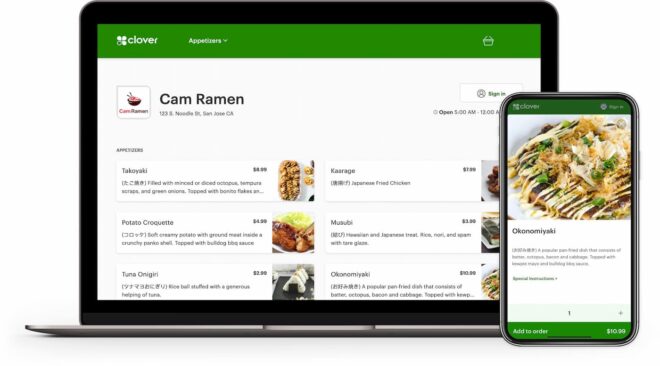Aside from the environmental and social toll that this waste generates, throwing away food can also negatively affect your profit margins as a restaurant owner. You’re literally paying for, storing, and prepping ingredients that may ultimately end up going straight in the trash bin.
How can restaurants reduce food waste?
This article outlines six simple steps designed to eliminate food waste, help the planet, and protect your bottom line. Here’s how to reduce food waste in restaurants – whether yours is a full-service establishment, quick service restaurant, or a food truck.
1. Conduct a food waste audit
One of the most important steps involves carefully analyzing your restaurant’s food waste to determine the scope of the problem. This process allows you to identify opportunities to improve how you handle inventory and waste management within your establishment.
Our restaurant POS systems come with built-in inventory management capabilities to help make these types of audits much easier. Detailed reporting and analytics also allow you to calculate restaurant food costs quickly so you can better understand where your money is going.
2. Reduce food spoilage
The goal is to avoid stocking up on inventory with short shelf lives. Refrigerated food staples will eventually expire. Therefore, you should try to streamline your purchasing needs as much as possible by only buying items you’re confident will be sold before they go bad.
Whether at home or in the restaurant, this is easier said than done. At the same time, however, reducing food spoilage in the refrigerator can be relatively low-hanging fruit.
3. Simplify your menu
If there’s only one dish on your menu that uses hollandaise sauce, for example, you may consider removing that item. This may be a good exercise to do with any menu options made from rarely used ingredients. Instead, design dishes that use similar ingredients. That way, you can still buy in bulk – while remaining confident that all the inventory you purchase will get used in one way or another.
Buying ingredients that serve multiple uses across multiple dishes is one of the easiest ways to reduce food waste in restaurants.
4. Standardize your portion sizes
The more consistent your portion sizes are, the more precisely you can measure and control unnecessary waste – in the kitchen and at the table. If, for example, most customers don’t finish their Buffalo wings, you know you can serve slightly smaller portions of this popular appetizer.
5. Improve kitchen and waitstaff communication
A lot of food waste comes from mixed up orders. For example, a customer might order minestrone only to end up with split pea soup. This problem is especially common when using pen and paper to transmit orders from the dining area to the kitchen.
A better alternative is to use devices that can instantly send and receive orders between both halves of the restaurant so that fewer dishes are sent back and thrown away. Technology can improve communication, allowing you to reduce unnecessary waste.
6. Don’t throw away food
This seems like an obvious statement, but food only becomes waste when you throw it away. If you compost it or donate it to soup kitchens, that uneaten food avoids the bin and serves a new and less wasteful purpose.
As a bonus, your restaurant can now market its environmental commitment to customers who increasingly prefer dining at establishments with a green initiative.
Ready to improve your bottom line?
Restaurant owners use our POS systems to help them manage payments, launch loyalty programs, and automate more of their operations. Our POS solutions can also help you streamline inventory management and design more sustainable dishes to help reduce food waste.
To learn how our POS technology can help, contact a Clover Business Consultant today.
CONTACT SALES






